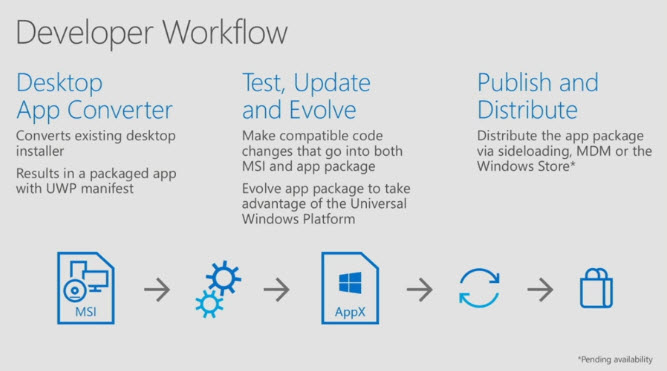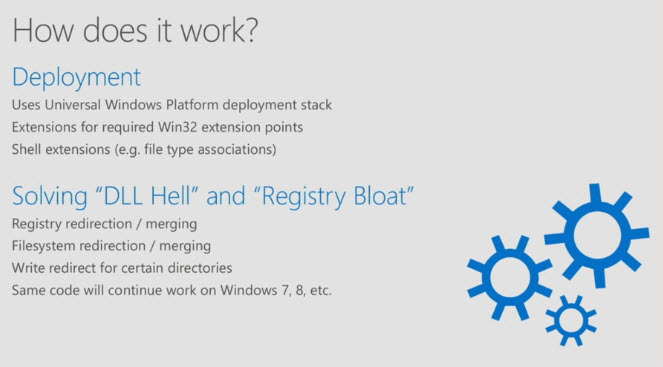A look at Project Centennial
Project Centennial is an upcoming feature of Windows 10 that allows users to run converted desktop programs as UWP apps on PCs running the OS.
If you have followed Microsoft's Build 2016 Developer Conference last wee , you may know already that Microsoft plans to release release a converter that turns desktop programs into Universal Windows Platform apps.
Microsoft demonstrated the conversion of two games during the keynote but did not reveal information about the process at that time.
One of the sessions held later on however did. You can watch it on Microsoft's Developer site if you want, or continue reading first.
Project Centennial

The main idea of Project Centennial is to provide developers with an easy to use converter to convert their Win32 or Net programs to the UWP.
Programs get converted ideally without the requirement to rewrite any code, and while that is the case for many desktop programs, some will require code rewrites while others cannot be ported right now at all.
The process begins with the converter which takes the installer file (this does not need to be a msi, it can be something else, even a batch installer), to create a packaged app with UWP manifest out of it.
What's interesting here is that it will monitor what the program does during installation. This includes all of its writes to the Registry as well as files and folders that it creates. The package will simulate these writes using redirects to make the app believe that the files and Registry keys exist, when in fact, they don't on the underlying system.
This AppX package can be sideloaded to be installed on the system, or made available on Windows Store so that users can download and install it from there.
Why would developers do that?

Developers may have certain advantages when they convert their desktop programs to Universal Platform Applications.
Apart from being able to sell their app in Windows Store, being listed in Windows Store may improve the discoverability of the program.
Since they can continue to offer the program on their website (either as a Win32/Net program or Appx package), and third-party sites, they don't lose out on customers necessarily when they do.
Additionally, it may be easier to bring the converted app to other devices running Windows 10.
Last but not least, developers may add features of the UWP such as tiles, background notifications or app services.
Microsoft hopes that the conversion is just the first part of the process of turning Win32 or Net programs into full UWP apps that will run on all platforms.
What about users?
Project Centennial is a Windows 10 only feature that will require the Anniversary Update that comes out later this year on top of that.
This means that most Windows users cannot download and install these converted programs right now.
Since file and Registry writes use redirects during installation only, it means that everything is removed thoroughly when the app is uninstalled from the system. Please note that this does not include writes that happen while the app is being used.
Theoretically, security should be better as well as Windows Store apps get vetted by Microsoft before they are allowed to be offered in the Store.
Microsoft tries to improve security as well by preventing converted desktop programs from installing services or drivers, or using elevation.
These converted apps are not sandboxed however like UWP apps which means that there is more of a chance that they will do something questionable or even outright malicious.
Much of it comes down to Microsoft's review process for Windows Store apps, and how fast the company reacts when problematic applications slip through and are offered in Store for a period of time.